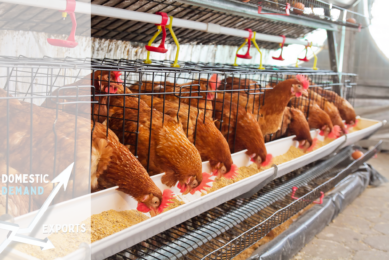Updated genome sequence of the grass pea

UK-led researchers have completed the most detailed genome assembly of the grass pea, which is a key high protein crop grown for both livestock feed and human consumption.
The research, conducted by the John Innes Centre, Norwich, offers new potential to accelerate modern breeding of the underutilised legume for climate-smart agriculture.
Although the grass pea has been grown for centuries, it has received little interest from plant breeders. It is grown in the Horn of Africa (Eritrea, Ethiopia), Bangladesh, Nepal and parts of India.
In more recent times it has been grown as an insurance crop that survives when other crops fail.
This new genome sequence means that we are even closer to adding grass pea to the list of climate-smart crops of tomorrow.
Improves on early work
In the study, published in the journal Nature, the scientists say the genetic sequencing of the grass pea – nearly twice the size of the human genome – was assembled from scratch and improves on earlier work.

Dr Peter Emmrich, visiting group leader at the John Innes Centre and researcher at Norwich Institute for Sustainable Development, said the open-sourced research could be hugely beneficial.
“We want to establish this new genome sequence as the reference genome for the grass pea community and we’re delighted to share this valuable resource for other scientists to use and learn about grass pea.
Secret to the grass pea’s resilience
“At a time of increasing weather shocks, this genome allows us to unlock the secrets of grass pea’s resilience to further improve this crop for farmers, and inform developments of other crops, such as peas.”
Grass pea grows well in low fertility soils and arid areas because of its outstanding tolerance of dry or flooding conditions, but it does contain a toxic component that may cause paralysis in livestock and humans if consumed in excessive quantities.
It can be grown as a sole crop, in intercropping systems or in mixtures. In Ethiopia, grass pea is grown in rotation after barley or sometimes after a legume crop, such as pea or chickpea. In Bangladesh, grass pea forage is grazed at a young stage and then let to regrow for harvesting seeds: the whole grass pea plant is pulled out when still green and let to dry in the field. The seeds are then removed, leaving valuable straw for fodder.
And in tropical regions, it is often sown among transplanted rice plants, and it grows up on residual water once water id drained and the rice harvested. Grass pea grown for seeds in India yielded an average of 300-500kg seeds/ha but yields up to 1.5t/ha have been reported.
Future needs resilient crops
Dr Anne Edwards research assistant at the John Innes Centre, said: “As we prepare for a future of increased climate change, we are going to need crops that can cope with drought, or flooding or inundations of salt water. This new genome sequence means that we are even closer to adding grass pea to the list of climate-smart crops of tomorrow.”











